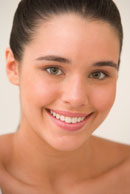Tea Tree Oil | Triclosan

How does benzoyl peroxide work?
Benzoyl peroxide (the only beta hydroxy acid) has long been known as one of the most effective anti acne skin care products. But how does benzoyl peroxide work? What does it do to acne? Why is it so effective, and are there other ingredients that are equally effective? Once we know how benzoyl peroxide works, we can discuss possible side effects, advantages and disadvantages of this type of anti acne therapy.
What does benzoyl peroxide do?
When applied to the skin, benzoyl peroxide creates oxygen. The bacterium that causes acne, P. acnes, like other bacteria, cannot live in the presence of oxygen and thus dies. So benzoyl peroxide actually wipes out the bacterium that causes acne.
This oxidizing action is similar to the way hydrogen peroxide disinfects cuts. But benzoyl peroxide seems to be particularly effective against P. acnes, and is more stable.
Are there other ingredients as effective as benzoyl peroxide?
Yes. One anti acne ingredient has proven equally effective as benzoyl peroxide: tea tree oil. Five percent concentrations of tea tree oil and benzoyl peroxide were tested side-by-side for 90 days. Benzoyl peroxide worked faster, but tended to cause more side effects. Tea tree oil was as effective, though it worked more slowly and caused fewer side effects.


How do side effects of benzoyl peroxide work?
Though oxygen is necessary to life, an excess of oxygen can be dangerous (and even fatal to bacteria, as we have seen). The side effect of producing oxygen on the surface of the skin is that it dries the skin out. For those with extremely sensitive or dry skin, benzoyl peroxide can cause peeling and irritation.
Generally, these side effects are mild. But regular use of benzoyl peroxide should be counteracted with a non comedogenic moisturizer.
Review of acne treatments
See the list of recommended acne treatments!



